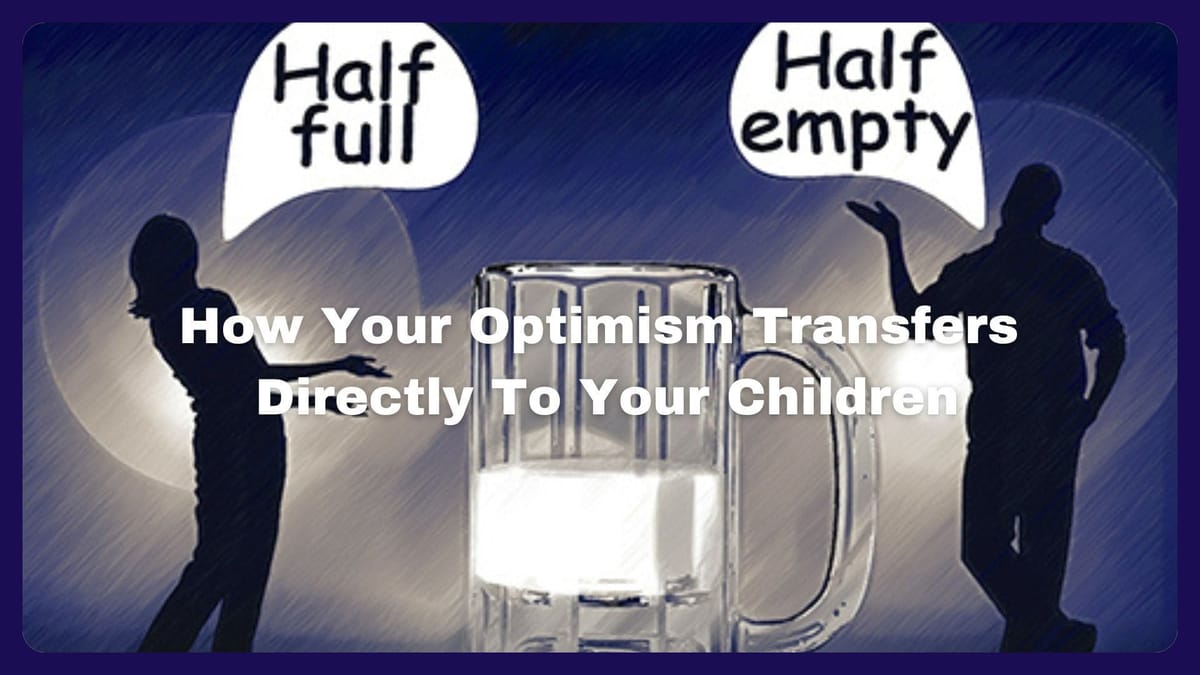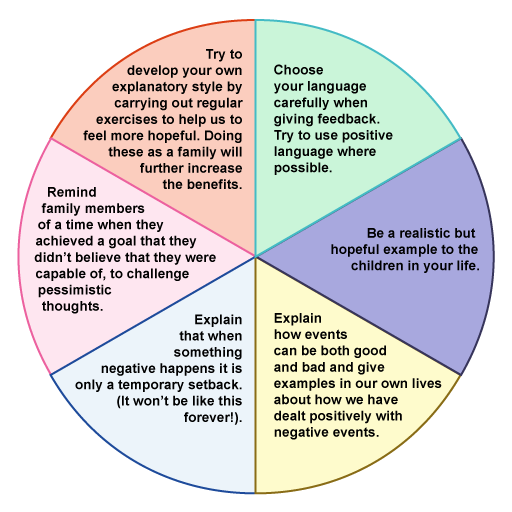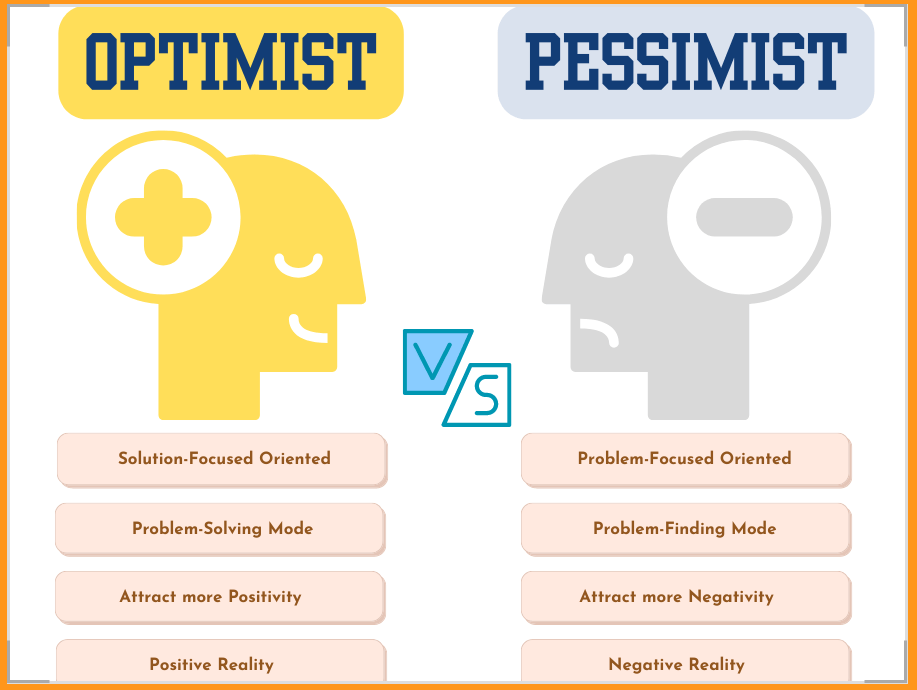The 65% Advantage: How Your Optimism Transfers Directly to Your Children
Individuals who practice positive thinking techniques experience 23% lower cortisol levels (the stress hormone) and demonstrate improved immune function compared to those with more pessimistic outlooks.

In an era where mental health challenges are increasingly prevalent, the science of positive thinking offers a powerful tool for both adults and children. Far from wishful thinking, positive psychology has emerged as a well-researched field with tangible benefits for psychological and physical well-being. How we think powerfully influences how we feel, function, and flourish.
This article explores how cultivating optimism can transform our mental landscapes and how adults can effectively model these practices for the next generation.
Understanding Positive Thinking in Today's Mental Health Landscape
Recent statistics highlight the urgency of addressing mental wellness:
According to the World Health Organization, depression affects approximately 280 million people worldwide, while anxiety disorders impact nearly 301 million. In the United States alone, one in five adults experience mental illness annually, with similar trends observed in children and adolescents.
Amid these concerning figures, positive psychology offers a complementary approach to traditional mental health interventions. Research from the University of Pennsylvania's Positive Psychology Center indicates that:
Individuals who practice positive thinking techniques experience 23% lower cortisol levels (the stress hormone) and demonstrate improved immune function compared to those with more pessimistic outlooks.

The Neurological Basis of Positive Thinking
The scientific foundation for positive thinking lies in neuroplasticity—the brain's remarkable ability to form new neural connections throughout life. A 2023 study published in the Journal of Cognitive Neuroscience revealed that:
Consistent positive thinking practices can rewire neural pathways, strengthening resilience and emotional regulation.
When we engage in positive thinking exercises, our brains release neurotransmitters like dopamine and serotonin, chemicals associated with feelings of happiness and well-being. Dr. Richard Davidson, founder of the Center for Healthy Minds, found that:
Eight weeks of mindfulness and positive thinking led to measurable changes in brain regions associated with attention, awareness, and emotional processing.
Physical Health Benefits of Positive Thinking
The mind-body connection means positive thinking extends beyond mental health, influencing physical well-being in surprising ways:
- Cardiovascular Health: A 10-year study by the Mayo Clinic found that optimistic individuals had a 35% lower risk of heart disease compared to their pessimistic counterparts.
- Immune Function: Researchers at Carnegie Mellon University discovered that positive thinkers are 52% less likely to develop cold symptoms when exposed to the common cold virus.
- Longevity: A comprehensive meta-analysis published in 2024 in the Journal of Personality and Social Psychology examined 97 studies involving nearly 275,000 participants, concluding that individuals with higher levels of optimism lived approximately 11-15% longer than pessimistic individuals.
- Pain Management: Studies show that positive thinking techniques can increase pain tolerance by up to 28% in chronic pain patients.
Psychological Benefits of Positive Thinking
The mental health advantages of positive thinking are equally compelling:
- Stress Reduction: The American Psychological Association reports that individuals who practice positive thinking techniques experience 31% lower levels of perceived stress.
- Improved Resilience: A longitudinal study tracking individuals through major life challenges found that those with optimistic thinking styles recovered from setbacks 60% faster than those with pessimistic outlooks.
- Enhanced Creativity: Research from Stanford University demonstrates that positive moods expand cognitive flexibility, increasing creative problem-solving abilities by up to 25%.
- Better Relationships: Optimistic individuals report 38% higher relationship satisfaction and demonstrate greater empathy and conflict-resolution skills.

Cultivating Positive Thinking in Adults
Developing a positive mindset is a skill that can be honed with practice:
- Practice Gratitude: Maintaining a daily gratitude journal increases positive emotions by 25% after just three weeks of consistent practice.
- Challenge Negative Thoughts: Cognitive reframing techniques help identify and reinterpret negative thought patterns, reducing anxiety symptoms by up to 42% in clinical studies.
- Mindfulness Meditation: Just 10 minutes of daily mindfulness practice can reduce rumination and increase positive emotional states by 27%.
- Positive Self-Talk: Replacing self-criticism with self-compassion reduces depression symptoms by 40% and increases overall life satisfaction.
- Physical Activity: Regular exercise boosts mood-enhancing endorphins and can be as effective as medication for mild to moderate depression in some individuals.
Children and Positive Thinking
The benefits for children are profound:
Children's developing brains are particularly receptive to positive thinking practices.
A 2023 study in Developmental Psychology found that children who learned positive thinking techniques before age 10 showed 45% higher emotional intelligence scores as teenagers.
- Academic Performance: Students trained in positive thinking techniques showed 31% improvement in test scores and 28% better problem-solving abilities.
- Social Skills: Children who practice positive thinking demonstrate 40% better conflict resolution skills and report higher quality friendships.
- Emotional Regulation: Mindfulness practices reduce behavioural problems by 35% in elementary school children.
- Resilience: Children taught positive coping strategies show 50% faster recovery from disappointments and setbacks.

Adults as Role Models for Positive Thinking
Children learn primarily through observation, making adults' modelling of positive thinking crucial:
- Demonstrate Optimistic Explanatory Styles: Verbalize positive interpretations and solution-focused thinking when facing challenges. Children who observe this approach are 65% more likely to adopt similar thinking patterns.
- Practice Self-Compassion: Children who witness adults treating themselves with kindness are 48% more likely to develop healthy self-esteem.
- Express Gratitude: Families who practice gratitude together report 30% higher levels of happiness and 22% lower levels of depression.
- Normalize Mistakes: Adults who frame mistakes as learning opportunities help children develop a growth mindset, increasing their persistence in challenging tasks by 40%.
- Encourage Emotional Awareness: Teaching children to identify and express emotions positively improves their emotional intelligence by 37%.

Implementing Positive Thinking in Daily Family Life
Creating a positive thinking environment at home can transform family dynamics:
- Positive Morning Routines: Families who begin the day with positive affirmations or gratitude practices report 45% fewer conflicts.
- Strength-Based Conversations: Discussing each family member's daily successes and strengths increases family cohesion by 33%.
- Mindful Technology Use: Families who limit negative media consumption and practice intentional digital wellness report 29% higher levels of optimism.
- Collaborative Problem-Solving: Including children in solution-focused discussions increases their sense of capability and reduces anxiety by 41%.
- Celebrating Progress: Recognizing incremental improvements rather than focusing solely on outcomes builds confidence and persistence.
Positive Thinking in Educational Settings
Schools implementing positive psychology programs have reported remarkable outcomes:
- A 2024 study of 5,000 students across 50 schools found that positive education programs reduced depression symptoms by 55% and anxiety by 48%.
- Schools incorporating a positive thinking curriculum reported 37% fewer disciplinary issues and 29% higher attendance rates.
- Teacher training in positive psychology led to 42% higher job satisfaction and 25% lower burnout rates.
- Students exposed to positive education demonstrated 31% higher academic achievement and 44% better social skills.
Overcoming Obstacles to Positive Thinking
Despite its benefits, cultivating positive thinking can be challenging:
- Toxic Positivity: Acknowledge that toxic positivity—denying or suppressing negative emotions—is counterproductive. Authentic positive thinking encompasses the full spectrum of emotions while maintaining a constructive outlook.
- Perfectionism: Studies show that perfectionistic tendencies reduce the effectiveness of positive thinking practices by 37%. Embracing "good enough" thinking significantly improves outcomes.
- Persistent Negativity Bias: Our brains are naturally wired to focus on threats and negative information. Counteracting this requires intentional effort—positive experiences should be savoured for at least 20 seconds to register in long-term memory effectively.
- Environmental Factors: External stressors can challenge positive thinking practices. Creating "positivity bubbles"—designated times and spaces for optimistic thinking—can provide balance.

Conclusion: The Ripple Effect of Positive Thinking
The power of positive thinking extends beyond individual benefits, creating ripple effects throughout families, schools, and communities. By intentionally cultivating optimistic outlooks and modelling these practices for children, adults can help foster a generation with greater resilience, emotional intelligence, and psychological well-being.
By embracing positive thinking practices today, we invest not only in our well-being but in the mental health of future generations—creating a legacy of resilience and optimism that extends far beyond ourselves.






